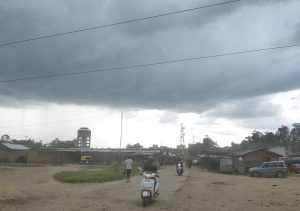India
Unusual monsoon skews rainfall patterns in India

Eastern Mirror Desk (With inputs from Hindustan Times)
Dimapur, Aug. 12: Climate change is drastically affecting rainfall patterns, especially during monsoon season in recent years. According to the Secretary of the Ministry of Earth Sciences (MoES) M Rajeevan, two patterns have emerged during the monsoon season.
“The dry spells or days with little or no rain have increased while days with extremely heavy rains in a short period have also increased,” he said.
The Indian Meteorological Department (IMD) informed that there was a rainfall deficiency of 33 per cent in June, which reduced to zero per cent, as of August 10. Although IMD officially declared that there was no monsoon deficiency in the country this year, states across the country reported uneven and spatial distribution of rains.
During the first week of August, Maharashtra saw excess rainfall by 161%, with reports of floods leaving a trail of devastation in its wake. Telangana, Karanataka and Gujarat also recorded an excess with 148%, 128% and 112% respectively. Although states in the north-eastern region recorded heavy deficits, Nagaland recorded an excess of 60%. Tripura and Meghalaya recorded the highest deficiencies of rainfall with 69% and 64%.
Furthermore, recent data from the World Meteorological Organisation (WMO) reported that the hottest months this year were June and July. It also stated that the period from 2015-2019 was the hottest on record globally.
According to WMO, the Kerala floods in August last year resulted in economic losses worth 4.3 billion US dollars.
It also stated that rainfall in Kerala was 96% above the long-term average, with weekly total for the weeks 9-15 and 16-22 August was 258% and 218% above average, respectively. These floods were categorised by WMO as an ‘extreme weather event’ which, it said, were a part of other global catastrophic events being caused by climate change.
According to some experts, this variation in monsoon distribution occurs once every few years. However, the alarming nature of this rainfall pattern is that some states, which were deficient in rainfall last week, recorded heavy rainfall leading to normal or excess rainfall the following week.
As of June 1, the country received 19% excess rain overall; and experienced 14% deficient and 64% ‘normal’ rains.

